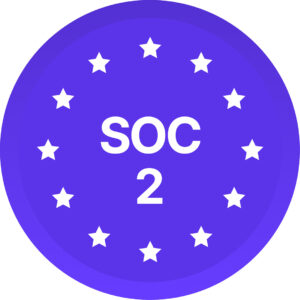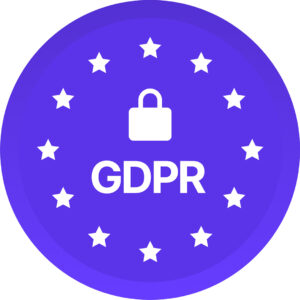Employee turnover is a silent profit killer. Studies suggest replacing a single employee can cost anywhere from 30% to 150% of their annual salary. But this is only part of the equation—turnover also drains team morale, erodes institutional knowledge, and stretches resources thin as new hires are onboarded.
Yet, these numbers don’t tell the whole story. In times of economic uncertainty, such as in 2023 and 2024, turnover rates can appear deceptively low—not because employees are thriving, but because they fear the instability of the job market. With job openings hitting their lowest levels since January 2021, many workers chose to stay put, not out of loyalty, but out of necessity. It’s a reminder that even low turnover deserves scrutiny. Understanding the true reasons behind why employees stay—or leave—is where people analytics shines. Organizations that rely on guesswork instead of actionable insights often find themselves in a perpetual cycle of losing or misinterpreting valuable talent trends.
People analytics can break the cycle by shining a light on the hidden reasons behind employee churn.
People analytics vs. HR analytics
Are people analytics and HR analytics the same? Not quite. HR analytics typically focuses on measuring and optimizing HR processes—think recruitment costs, time-to-hire, and training effectiveness.
People analytics, on the other hand, digs deeper. It uses data from across the organization—not just HR—to understand how employee behavior, sentiment, and engagement shape broader business outcomes. While HR analytics might tell you how long it takes to fill a role, people analytics reveals whether the role will stay filled and why employees thrive—or fail—within certain teams or environments.
Related: 7 Trends Redefining HR Analytics for 2025
The role of people analytics in employee retention
Retention isn’t just about paychecks or perks—it’s about figuring out the “why” behind an employee’s decision to walk away. It’s rarely as simple as the lure of a higher salary; the reasons often run deeper and more personal.
Peeling back the layers to reveal patterns that might otherwise go unnoticed, people analytics helps organizations uncover the hidden reasons behind employee departures. With engagement surveys, performance reviews, and even subtle shifts in employee sentiment, HR leaders can start to connect the dots. Is a specific department consistently losing talent? Are employees expressing frustration with unclear career paths? People analytics doesn’t just point to the exits—it helps you understand what’s pushing people toward them.
- Pinpointing high-turnover hotspots: Is one department experiencing higher resignation rates than others? People analytics can uncover systemic issues such as poor management or lack of career growth.
- Linking sentiment to behavior: Employee sentiment data can often predict resignation trends. A consistent dip in engagement metrics might indicate trouble ahead.
- Understanding demographic nuances: Analytics can highlight patterns, such as whether younger employees or specific groups are more likely to leave—and why.
What key insights can people analytics software provide?
People analytics platforms transform raw data into actionable insights that directly impact retention. Here’s how:
- Sentiment analysis: Employee sentiment is often the first indicator of dissatisfaction. People analytics tools can evaluate feedback—both structured and unstructured—to identify red flags before they escalate into exits.
- Industry benchmarking: Comparing internal metrics with industry averages gives organizations clarity on where they stand and what needs attention. Are you losing top talent faster than competitors?
- Spotting systemic issues: From poor leadership to lack of advancement opportunities, analytics can reveal underlying barriers to retention. Tools like Diversio’s platform excel at highlighting these gaps while suggesting actionable next steps.
9 lessons people analytics teaches us about employee retention
Retention has a rhythm—patterns, signals, and turning points—but too often, organizations don’t see them until it’s too late. People analytics shifts that dynamic, showing us how to read the story hidden in the data. It reveals the deeper truths about why people stay, why they leave, and what makes them decide if the job they’re in is worth the energy they give to it. Here’s what it teaches us:
1. Sentiment is the spark
An employee’s attitude toward their work can be a forecast. When engagement drops, it doesn’t happen in isolation. There are reasons behind it: a dismissive manager, an unclear career path, or a lack of recognition. People analytics translates those drops in sentiment into actionable patterns, helping organizations see and address the friction points before they ignite into full disengagement.
2. Retention is personal
The reasons people stay or go aren’t universal. A 25-year-old might leave because they crave flexibility; a mid-career professional might leave because they see no path forward. People analytics pulls apart these nuances, showing HR teams that a one-size-fits-all approach is as outdated as the 9-to-5 punch clock.
3. Turnover is rarely a surprise
When someone resigns, it feels sudden, but the signs are usually there. Maybe it’s a team with consistently low morale or a wave of exits after a particularly tough quarter. These patterns aren’t random, and people analytics helps connect the dots so organizations can step in before those exits become trends.
4. Leadership is a hinge point
Managers set the tone more than policies ever could. People analytics exposes where leadership falters—teams with unclear goals, inconsistent communication, or unresolved tensions. These insights make it easier to target leadership development where it’s needed most, ensuring managers become retention allies, not drivers of attrition.
5. Small frustrations aren’t small at all
A clunky process. A workload that never lets up. A recurring meeting with no clear purpose. These aren’t huge issues on their own, but they add up. People analytics shows how these everyday irritations accumulate, creating friction that pushes employees toward the door. Fixing these micro-barriers can have an outsized impact.
6. Belonging isn’t a buzzword
We’ve learned from people analytics that employees who feel excluded are far more likely to leave. It’s not just about diversity metrics—it’s about whether employees feel respected, included, and heard. Analytics surfaces where inclusion efforts are falling short, giving organizations the chance to create workplaces where everyone feels like they truly belong.
7. Engagement is a moving target
Engagement isn’t static; it evolves. New hires want clarity, mid-career employees crave growth, and long-term staff often battle burnout. People analytics maps these shifts, showing organizations where to focus support at each stage of the employee lifecycle.
8. Comparing yourself matters
Sometimes, the problem isn’t inside your organization—it’s how you stack up against others. Are you losing talent faster than your competitors? Do your benefits align with industry standards? Benchmarking data from people analytics provides the context organizations need to stay competitive.
9. Proactive beats reactive every time
Perhaps the most valuable lesson people analytics teaches is the importance of anticipation. It’s not about scrambling to respond after a wave of resignations—it’s about seeing the warning signs early and acting decisively. Organizations that embrace this mindset are the ones that thrive.
Turning insights into action
Data, on its own, is inert. It sits in spreadsheets, lifeless, until someone starts to ask the right questions. That’s the real power of people analytics—it pushes us to see what we’ve been missing and compels us to act on it.
Take a team where employees feel undervalued. The numbers might show low engagement or high turnover, but the story behind those numbers is about recognition—or the lack of it. A simple gesture, like a personalized acknowledgment of someone’s contributions, can shift the dynamic entirely. Or imagine seeing mid-career employees leaving faster than expected. It’s not just a trend—it’s a message: “We need a reason to stay, a path to grow.”
Related: Employee Professional Development in the Workplace: Strategies and Benefits
Then there are pulse surveys. These aren’t the usual yearly rituals where the feedback arrives too late to make a difference. They’re closer to a conversation—a way to catch signals in real-time before they fade into frustration.
Diversio’s people & culture analytics platform helps make these signals actionable, turning them into recommendations that are specific, timely, and effective. The software not only tracks these trends but also provides tailored recommendations, ensuring retention strategies are both proactive and impactful.
10 key actions HR leaders can immediately take:
- Redesign onboarding experiences: Use analytics to uncover where new hires feel lost or disconnected early on. Strengthen onboarding programs with personalized support and check-ins during their first 90 days.
- Track and address micro-barriers: Analyze data to identify small, recurring frustrations—like unclear processes, outdated systems, or bottlenecks in communication—that can erode employee satisfaction over time.
- Develop cross-functional mentorship opportunities: Pair employees with mentors from other departments to help them gain new perspectives, build relationships, and feel a stronger connection to the organization’s mission.
- Introduce stay interviews: Instead of waiting for exit interviews, hold regular stay interviews to ask current employees what keeps them engaged—or what might tempt them to leave. Use these insights to refine retention strategies in real time.
- Build paths for lateral career moves: Not every employee wants to climb the traditional ladder. Create opportunities for lateral moves where employees can explore new skills or roles without leaving the company.
- Address team-specific stressors: Use pulse survey data to identify stress hotspots in particular teams. Offer tailored interventions, such as additional resources, flexible work options, or conflict resolution support, to alleviate strain.
- Incorporate wellness-driven retention strategies: Go beyond generic workplace wellness programs by tying them directly to your analytics. For instance, if data reveals employees struggle with mental health during specific quarters or projects, provide targeted resources during those times.
- Make recognition data-driven: Use analytics to track individual and team contributions, and tie recognition efforts directly to measurable achievements. Celebrate these wins publicly to reinforce a culture of appreciation.
- Embed DEI into leadership accountability: Regularly analyze how leaders’ behaviors impact employee engagement, belonging, and turnover. Hold leaders accountable with transparent metrics tied to inclusion and employee well-being. For more practical advice, read this guide about developing an inclusive leadership style.
- Leverage anonymous feedback loops: Use anonymous, recurring feedback tools to surface sensitive issues employees may hesitate to share openly. Follow through on addressing this feedback visibly to build trust and credibility.
Retention through the lens of people analytics
Retention isn’t a simple equation. High turnover might shout its problems, but low turnover can whisper its own set of challenges. In a tight labor market, employees often stay not because of exceptional workplace culture but out of fear of the unknown. People analytics helps organizations dig deeper into what’s truly driving retention—whether it’s genuine engagement or external circumstances.
What makes people analytics so valuable is its ability to trace the lines between sentiment and behavior, highlight leadership blind spots, and reveal the silent accumulations of frustration that often precede an exit. It transforms retention from a reactionary scramble to a proactive strategy—one informed by patterns, data, and human insight.
Ultimately, people analytics offers a framework for building a workplace that evolves alongside its people. A place where decisions aren’t made on assumptions but on what employees truly value.
Reduce turnover with Diversio people & culture analytics
Organizations don’t need to rely on guesswork to tackle employee retention. Diversio’s people analytics platform empowers businesses to spot trends, benchmark against peers, and make data-driven decisions that keep top talent engaged.
Here’s how Diversio stands out:
- Customizable engagement surveys: Designed to capture your team’s unique dynamics.
- Predictive analytics: Tools that don’t just analyze the past but predict future retention risks.
- Actionable insights: Powered by Diversio’s Recommendation Engine™, providing specific strategies to address turnover challenges.
- Industry benchmarking: Know exactly how your organization compares to competitors, so you can stay ahead.
Reducing turnover is about creating a workplace where employees feel valued, supported, and excited about the future. With Diversio’s people and culture analytics, organizations can turn retention from a challenge into a competitive advantage.
Book a demo today to learn how Diversio can transform your employee retention strategy.

